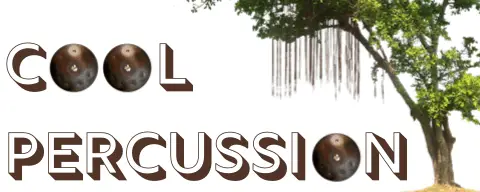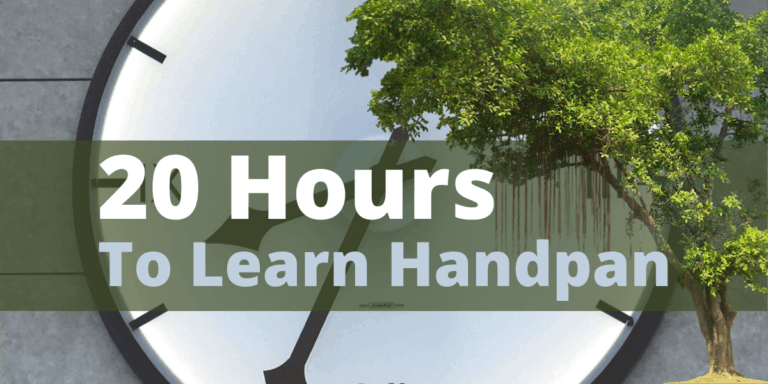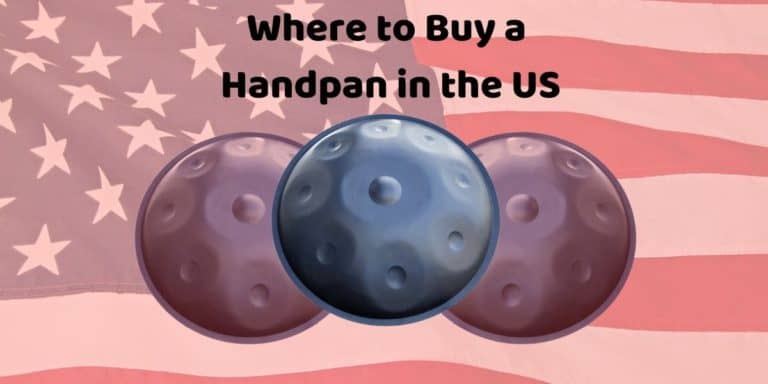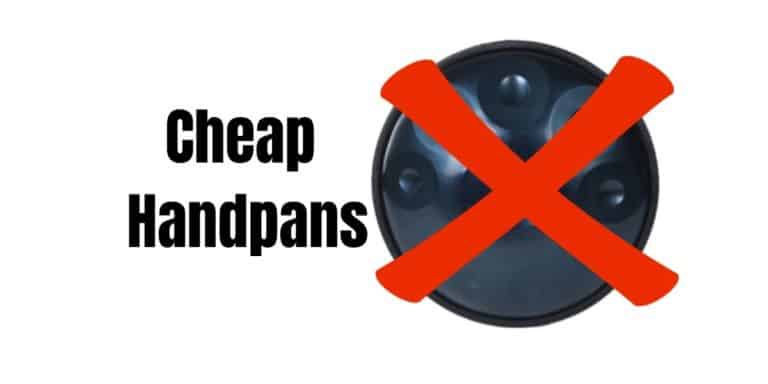Which Handpan Scale Should I Choose | Tips and Examples
I know where you are in the process of choosing your handpan. You’ve heard a few, searched some videos and now you want to decide which scale to buy.
Which scale should I choose for my handpan? – The scale you choose will be a personal choice. The one that sounds best to your ear. The one that makes you feel good. No scale is better to have than another thanks to the way they are tuned. There are, however, some preferential scales depending on what mood you want to play.
In this article I am am going to go through each of the most popular scales you will find on the best handpans. You are going to come across D Minor a lot to start with but I encourage you to scroll through, make more discoveries and find the right handpan scale for you.
With each scale, I will add a video or sound file so you can hear them tangibly.
In-Depth – What is a Handpan Scale?
The scale in itself, whichever scale it happens to be is like a set of steps. A series of notes in consecutive order. Major and Minor scales are generally eight notes long. Hence the earliest and most popular hand pans being eight-note varieties.
The eight notes are laid out in ascending or descending order on the handpan, so you can play left to right up and down the scale.
The purpose of the scale is so that you can build melodies and harmonies in the construction of your tune or song.
Diatonic scale
The great thing about handpans is that they are generally built on a diatonic scale, which facilitates making great music without any musical knowledge. Or at least, it is easy to play a tune, without two notes sounding terrible next to each other.
Because handpans are simple to learn, play and create music with, advanced musical knowledge is not essential.
Rather than turn this article into an Encyclopedia paper, if you want to learn more about Diatonic scales and why they work so well with the handpan, I recommend either an extended music theory class or a read of this ‘basic’ explanation of the diatonic scale on Wikipedia.
Personally I wouldn’t bother with either. Whilst the knowledge is interesting, at this stage of your handpan playing career, it is not important.
Why you can learn to play handpan scales quickly
On almost all instruments the notes are played in an ascending or descending order note by note. On a handpan, you will find that the notes and tone fields are laid out quite differently, Ascending or descending alternately from left to right, up or down the handpan {depending on which way it is sitting in your lap or on a stand].
Because the notes allow you to intuitively find your way around, you will find it tricky, not impossible though, to find a bad note, before or after the next that you play.
I always advise that a handpan beginner is not a novice for very long on this basis. You can become a good handpan player in just 20 hours
The notes, therefore, are the easy part. In direct contrast to many other instruments, the position of the handpan, and the technique is arguably the harder part. Especially the latter.
Basic techniques in playing the handpan scale.
Now you are safe in the knowledge that with little to no musical theory knowledge you can pick up a handpan in whatever scale and play beautiful music, you’ll want to know what the catch is. Well, there may be two, but they are easy to overcome.
- Technique
- Rythym
Playing Technique on your handpan
So the hardest part is going to be how you strike the handpan. This is something you will gain a feel or over time and practice will allow you to understand what works best for you. Do not hit your handpan too hard. It is designed to play the notes with softer strokes on the outer. Aggressive playing will detune your handpan more quickly.
Rhythm on your handpan
It isn’t essential but can help in providing some balance to the tunes you will create on your handpan. You are not going to have to be John Bonham when it comes to keeping rhythm on your handpan. But it is going to help to structure your tunes. Especially if playing pretty quick notes.
Again, just basic practice on your own, or using a metronome to train yourself to keep a basic beat will help.
NOTICE: – Keep Your Gu Clear
The hole in the bottom of your handpan is called a “Gu”. This is where the sound created by striking the handpan escapes. This should be left open, or at the very worst on a soft blanket. If using a handpan stand this is easy to do, or if playing on your lap, ensure the Gu is central between your legs.
Which Handpan Scale is Best to Play with Other instruments?
Always a good question and the easy answer is to choose D Minor. Not only is it a versatile scale, but it is also a very popular scale.
Hang on. Isn’t C the most popular? Well yes, in music in general, C will be the favored Key but Handpan music is not following that standard and remains heavily influenced by the sound of the original PANArt Hang. The Integral Hang used a version of D Minor and thus many early handpan players, if not buying an Integral, were requesting their makers to produce a D minor scale for theirs.
Also, if you want to play with other handpan players, whilst many will play well, a couple on D minor will match perfectly
Which is the Most Popular Scale for Handpans
An expansion of above, due to the D Minor Integral Hang popularity, both for playing and listening, many people own and play handpans in D minor.
Just as you are discovering now, and if you do not read further through this article, D Minor is the first scale positively identified by most people looking for tangible scale knowledge for a handpan, and choose that one straight away.
Many of the oldest and most viewed videos on YouTube are therefore D minor tunes handpans and this in itself fuelled the desire for more.
Ok, let’s get away from D Minor and move on.
You can choose a scale based on how you want Your Music to Sound.
A quick note on Minor and Major Scales – I am about to present releative feeling for major and minor scales as happy and Sad. Uplifting vs. thought-provoking – Be aware that this view is based on mainly Western culture, and the perception of Minor vs. Major scales elsewhere in the world can be quite different.
Major Scale Handpans
Major scales will provide you with a happy, uplifting feeling from the music. This is often the most desirable scale for a new handpan player. You want to make some happy music before experimenting with darker sounds and feels.
The video above demonstrates perfectly the D major scale with uplifting sounds. I really like the tune being played too!
Minor Scale Handpans
If you choose a Minor scale, you have the perfect handpan for melancholy. Perhaps you want to evoke thoughtfulness with your tunes. Perhaps you have some melancholy to share. A minor scale will more than cover you in this respect.
This has narrowed things down a bit, although there are other categories you can explore.
Hijaz and Tarnauyyn Scale Handpans
Often referred to as above, this is a harmonic minor scale or Phrygian. I’ll not go into the minute details of the source of these scales. indeed, I do not major in music, but these scales are awesome for building suspense and tension and can be hugely effective in handpan music. Especially when combined with other instruments, such as the violin. PANArt used the scale as have SPB and Saraz subsequently.
If you are looking to play with other handpan musicians, be sure someone can also accompany on a similar scale, as these are not going to mix comfortably universally.
Dorian Mode Handpan Scales
A very interesting scale just removed from a minor scale. This is perfect for meditative music. If you are looking to produce tunes for concentration and contemplation.
Difficult to explain thoroughly in words, this video from PantheonHalo will demonstrate far better than I can describe.
Best Scale for your first Handpan
Remember that you will be a novice for only a short while as I explain in my Guide to handpans for beginners.
There is no best scale, although I would tend to lean toward a major scale just for the happier and more enthusiastic sounds you will achieve.
The beauty of the handpan is the ease with which the notes play together. Yes, you can subscribe or pay for some lessons on how to play handpan, but to develop your own feel and style, I would suggest picking up your first and experimenting. It is virtually impossible unless tuned badly, to hit a duff note. Because of the way handpans are tunes to a single scale, each note works well with the others.
Just start playing and you’ll see what I mean.






![Hang Drum for Sale | Handpan & Tongue Drum Buying Guide [New]](https://cdn-0.coolpercussion.com/wp-content/uploads/2019/11/Hang-drum-for-Sale-768x384.png)
